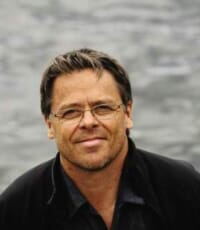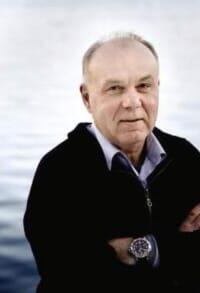Divided into three groups, the fish were raised on a grower diet with conventional levels of fishmeal and fish oil and two feeds with low fishmeal levels. One feed also had a low fish oil level.
The MicroBalance™ concept was used to balance the nutrition in the low fishmeal feeds. All the salmon grew well and those fed with the lowest proportion of marine protein were net fish protein producers.

780,000 Atlantic salmon divided
The trial was jointly organised by Marine Harvest and Skretting and conducted at the Centre for Aquaculture Competence (CAC) in Norway from May 2009 to February 2011 inclusive. CAC is a commercial-scale trial farm owned by Skretting, Marine Harvest and AKVA group and is equipped to measure all operational parameters just as precisely as in a small scale research station.
A total of 780,000 Atlantic salmon provided by Marine Harvest were divided and fed on one of three feeds:
- Conventional grower feed (pre MicroBalance™): 25 per cent fishmeal and 13 per cent fish oil with EPA + DHA comprising about 10 per cent of total fatty acids.
- Current OptiLine from Skretting Norway (using MicroBalance™): 15 per cent fishmeal and 13 per cent fish oil with EPA + DHA comprising about 10 per cent of total fatty acids.
- Experimental OptiLine (using MicroBalance™): 15 per cent fishmeal and nine per cent fish oil with EPA + DHA comprising about eight per cent of total fatty acids.
Same growth and FCR
The parameters monitored were growth, FCR, quality, health, sustainability and food safety. The total harvest weight was 3,517 tonnes. After the harvest the taste, smell and texture of the filets were tested by a panel of professional tasters. The results showed that both low fishmeal feeds gave the same growth and FCR as the control diet. There were no observed differences in fish health, nor in the quality parameters.
Impressed by the results
Commenting on the trial, Marine Harvest Global Research Manager Olav Breck said: “I am impressed by the results in the CAC trial. They show that Skretting has developed a concept that allows very low levels of marine raw materials."
“Most of our Norwegian customers are already using feed benefiting from MicroBalance™ some for 18 months now,” said Skretting Norway product manager Sissel Susort. “Their experience indicates that MicroBalance™ can lower feed costs without reducing fish growth, health or quality. This trial confirms it.”

Fish in/fish out
The salmon fed with the lowest proportion of marine products (15 per cent fishmeal, nine per cent fish oil) only needed 1.07 kilos of fish in their feed to produce one kilo at harvest.
Calculating protein alone showed a positive ratio, with fish out exceeding fish in. Thus dependency on marine raw materials only related to fish oil.
Trygve Berg Lea, Global Product Manager of Skretting commented: “This is the first time we see a positive fish protein ratio in a commercial production cycle."
"However, the goal of this trial was not a 1:1 fish-in/fish-out production but to document that the MicroBalance™ concept gives us a way of moving the ratio close to 1:1 if we need to.
"Demand for fishmeal and fish oil is increasing with the growth of aquaculture but the supply is limited putting pressure on prices. From 2000 to 2009 aquaculture’s share of global fishmeal consumption rose from 35 per cent to 65 per cent.
"Salmon farmers want to reduce costs and be less dependent on marine raw materials to secure future growth potential. The MicroBalanceTM concept fulfils those wishes.”

Micro-ingredients
Skretting Norway introduced MicroBalance™ in January 2010 after Skretting researchers discovered a group of micro-ingredients that counterbalance a considerable reduction of fishmeal in the feed, beyond the previously accepted minimum.
“Skretting Norway customers were keen to adopt the new, balanced technology. Ninety per cent changed to the new feed from the start. In 2010 that saved them some €12 million.”




